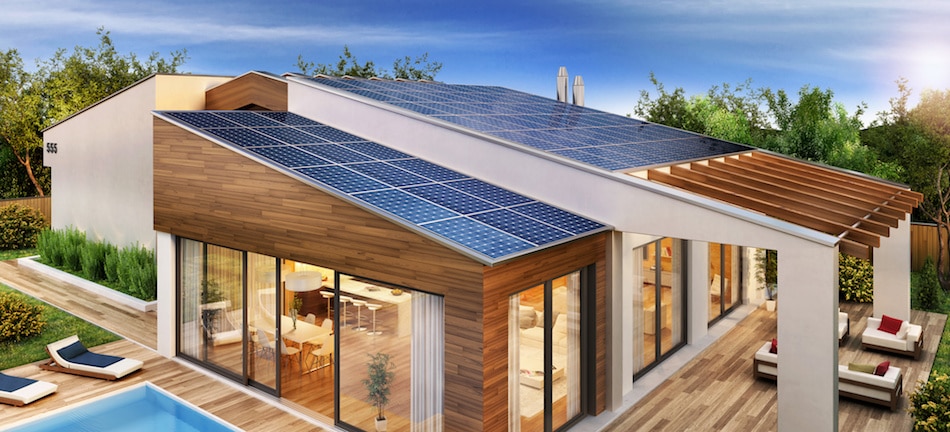
How Do You Measure the Value of Solar Panels?
 Do solar panels increase the value of a home? Most people understand that solar panels are an investment that will save them money, and solar panels do in fact increase a home’s value. However, a vague idea of money savings is often not enough for homeowners to feel comfortable putting down the up front cost that is associated with them. So just how much does solar increase a home’s value? The truth is that there are several ways to measure the value. We go into a few of them below as we learn about solar panels:
Do solar panels increase the value of a home? Most people understand that solar panels are an investment that will save them money, and solar panels do in fact increase a home’s value. However, a vague idea of money savings is often not enough for homeowners to feel comfortable putting down the up front cost that is associated with them. So just how much does solar increase a home’s value? The truth is that there are several ways to measure the value. We go into a few of them below as we learn about solar panels:
Cost per Watt of Energy for Solar Panels
Often people value panels based on the cost of every watt of renewable energy the panel provides. To calculate the cost per watt, take the total cost of the solar system and divide that number by its watt capacity. For a hypothetical 10 kilowatt system, that system has 10,000 watts. If that system costs $20,000, the cost per watt can be calculated by dividing $20,000 by 10,000 watts for a total of $2 per watt.
When looking at the cost of a system for a Minnesota home, make sure the figure incorporates any tax credit or other incentives. These can significantly reduce actual out of pocket cost. Having those figures handy can help create a better idea of how good a deal a solar energy system is.
Levelized Cost of Energy
A more accurate and in-depth figure is arrived at by considering the levelized cost of energy (LCOE) for the panels. A solar system is one where the homeowner will typically pay once for most of the system and then have that cost handled for many years. Most systems are warrantied for 20 or more years. Some of the systems installed in the 1970s and 1980s are still producing power at nearly full efficiency. As a result, the LCOE is a figure that gives the homeowner a better idea of the benefit that they will get through the many years with this system on the home.
The LCOE is often expressed as cents per kilowatt-hour. This is, coincidentally, the figure that homeowners will see on the monthly bill from their current electric company. These can vary from different communities, like Maple Grove. The LCOE allows homeowner to get closer to an apples to apples comparison and allow them to make a better decision.
Value in Appreciation
Another figure to consider is how much value solar panels add to a home, should a homeowner decide to sell. A large proportion of current home buyers say that green and sustainable features are big sellers for them when they are looking for a home. How much value solar panels will add depends on the market in the area. Talk to qualified local real estate professionals to learn more.
Differences Between Buying and Leasing
While solar panels have a lot of benefits, the upfront costs are what keep many people away from ever investing in them. The alternative to buying solar panels is to lease them, which can make the solar panels more accessible to a larger number of people. However, there are some differences that should be noted between buying and leasing before homeowners jump into either option. Here are some of the key differences between buying and leasing:
Buying
- Upfront costs are often $10,000-25,000 or more.
- Owners qualify for cash rebates and tax credits.
- Monthly electricity savings amount to 40-70%.
- Solar loans (if used) can last 10-20 years.
- Purchased solar panels will increase a home’s value when selling.
Leasing
- Upfront costs are often very little or nonexistent.
- Leasers do not qualify for tax credits or rebates.
- Monthly electricity savings amount to 10-30%.
- Solar leases can last 20-25 years, at which time the lessee is allowed to renew or purchase the panels.
- Leased solar panels will not increase a home’s value when selling.
These are just some of the major differences homeowners should know about buying vs. leasing solar panels. Anyone interested in either of these options must dedicate time to learning about solar power and panels before committing to either one.
Intangible Value
Solar doesn’t just add monetary value. It also adds intangible values in areas like lack of maintenance, a hedge against rising electric costs and continuity even outages of the power grid. Make a list of these and decide which are important to add them to a decision.
Each of these ways of looking at things can add to a more complete picture of the value of solar for you. By taking all of these factors into account, you can get a better idea of which solar system fits your needs.



